Welcome to winter in the southeast where one day you are wearing shorts, or in my case sundresses, and the next day temperatures have crashed below freezing. These fluctuations in weather cause a great deal of stress to gardeners in this region. But when do you really need to worry about your plants? And when should you take action to protect them from winter weather?
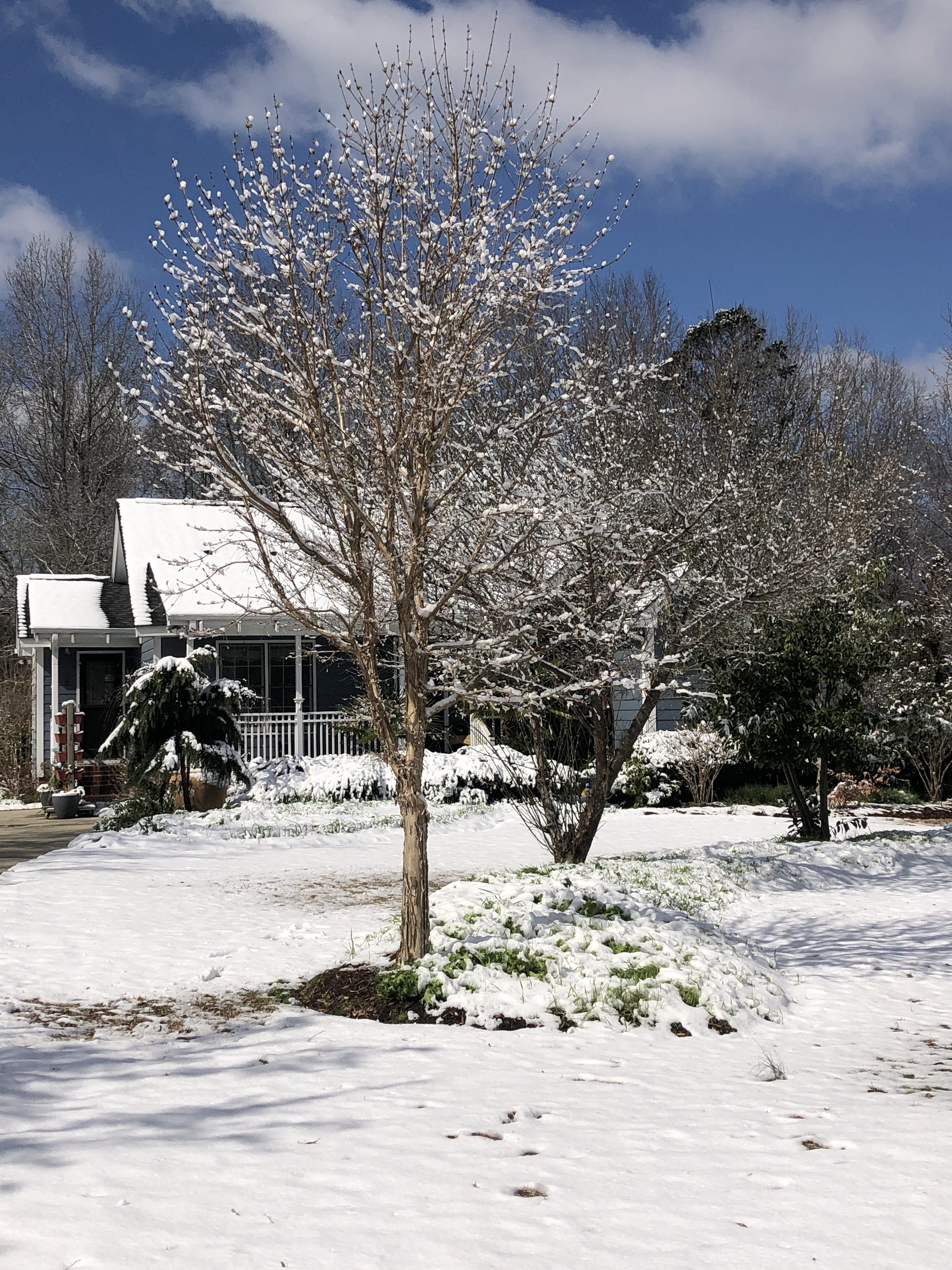
Some Background Information
I grew up in southeastern Michigan, Zone 5, and attended college in the even colder climate of West Lafayette, IN where I studied horticulture at Purdue University. In that climate there is no such thing as winter gardening. The ground freezes, the snow piles up, and activities such as skiing, ice skating, and riding snowmobiles take center stage. Every garage has at least one snow shovel and many folks have plow attachments for their riding lawn mowers. Gardens lay dormant from November to May and plant lovers have time off to dream and plan for the growing season ahead.
That is not the reality of winter in the southeast. Far from it! When I moved to central North Carolina Zone 7 twenty years ago it was for a very specific purpose: to get away from the cold! I did not want to spend my winter coordinating snow removal any longer. Instead, I wanted to live and work in an environment where cultivating plants year-round was possible, and snow was rare. In my mind, North Carolina was the “south” which meant it was HOT and HUMID. I did not get the memo, until my first winter, that southerners often endure a cruel cold season full of chaos, destruction, and disappointment.
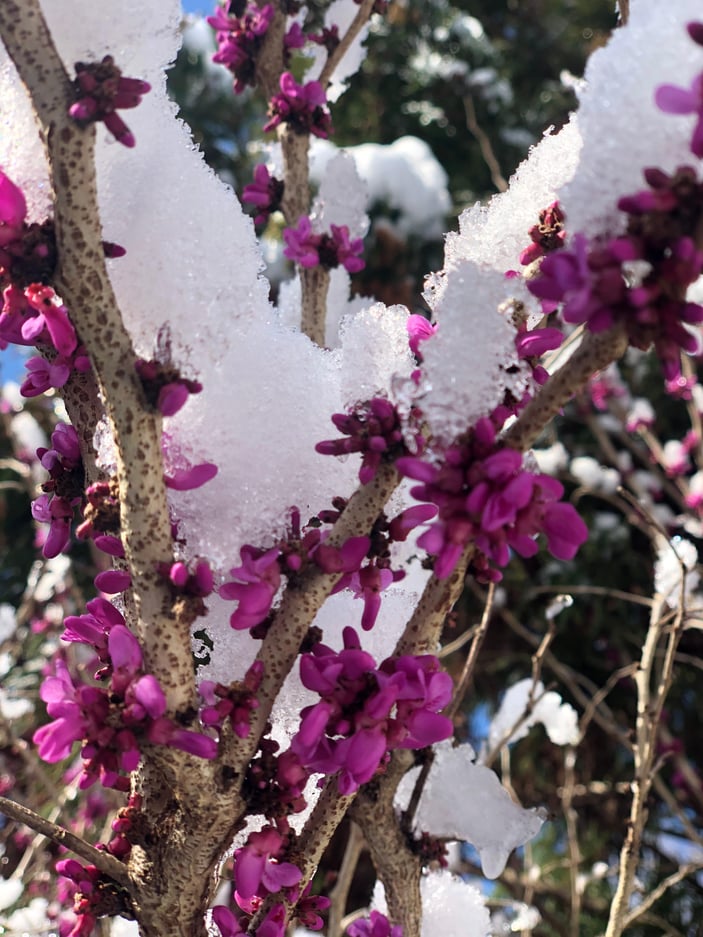
The branches of this Eastern redbud are covered in early spring blooms and snow. Some flowers may get damaged by the cold but these native trees are hardy.
Welcome to Winter in the Southeast
My first southern winter event was the epic ice storm of 2002. I had never experienced an ice storm, so I had no idea what would happen over the course of those 12 hours. At first it was fun. With my boss en route to England (or rather stuck on a runway at RDU airport) I was staying in the big house at Montrose Gardens to ensure the kitties were fed and the garden was safe in her absence. This stately, historic property had once served as the governor’s mansion during the brief time that Hillsborough was the state capitol of North Carolina. What an incredible experience for this northern girl!
Shortly after Jeopardy ended the power went out, leaving me in a dark, unfamiliar space. Over the course of the next 8 hours the horrifying sounds of branches creaking and cracking while trees collapsed all around kept me from sleeping. The only light in the night sky was the occasional explosion of a transformer.
When I went outside the next morning, I was greeted by a scene from a different universe. Everything was coated with ¼” of ice, shimmering in the sunlight. Huge trees had fallen everywhere, and more continued to break under the weight of all that ice. I vividly recall thinking that a Midwest blizzard was so much better than this nightmare scene. Suddenly I wished I was coordinating snow removal instead of facing the absolute destruction this weather event had created.
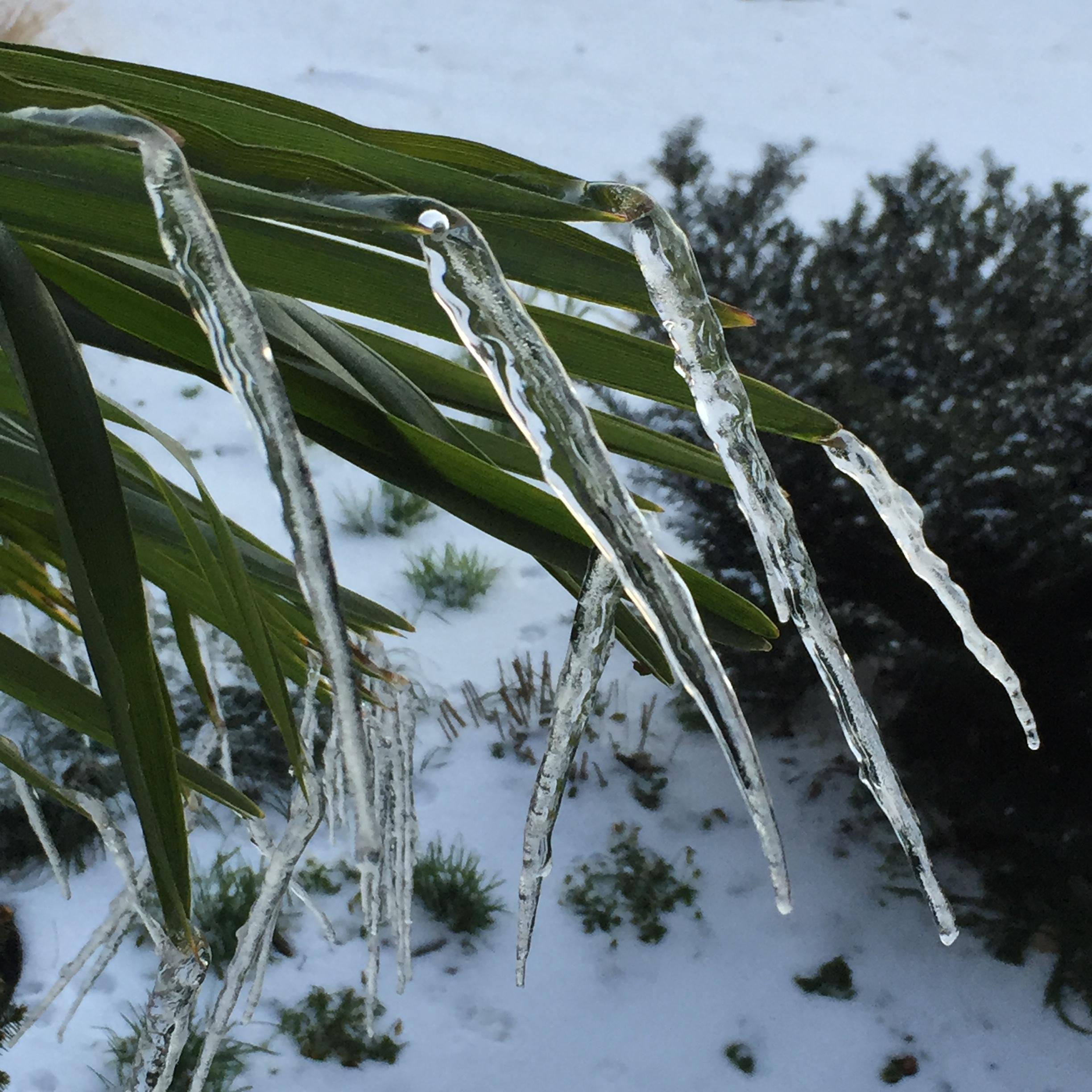
It took nearly three weeks for my little tobacco barn rental home to have power restored, and even longer for us to clean up the extremely damaged garden at Montrose. You could see the ice storm damage everywhere you looked: along the highway, in every landscape, and especially on the many large 100 year old trees on the property of this private estate where I lovingly worked.
Perhaps I was lucky to have had that ice storm early in my life as a tar heel. Now, all winter storms are compared to it, and luckily none have been as severe. From that experience I also learned to never make light of winter weather in the southeast, because ice is far more difficult to manage than snow.
Gardening Through Winter Extremes
One of the great attributes of living in this region are the many winter interest plants that adorn our gardens. Ornamental species such as Camellias, Daphne, and Edgeworthia have long been staples in southern landscapes because they have beautiful, fragrant flowers in wintertime despite the cold. Plus, think of all the broad leaf evergreens that provide structure in the landscape and all the cool season veggies that won’t survive through the heat of summer. Winter is actually a very busy time for gardeners in the south!
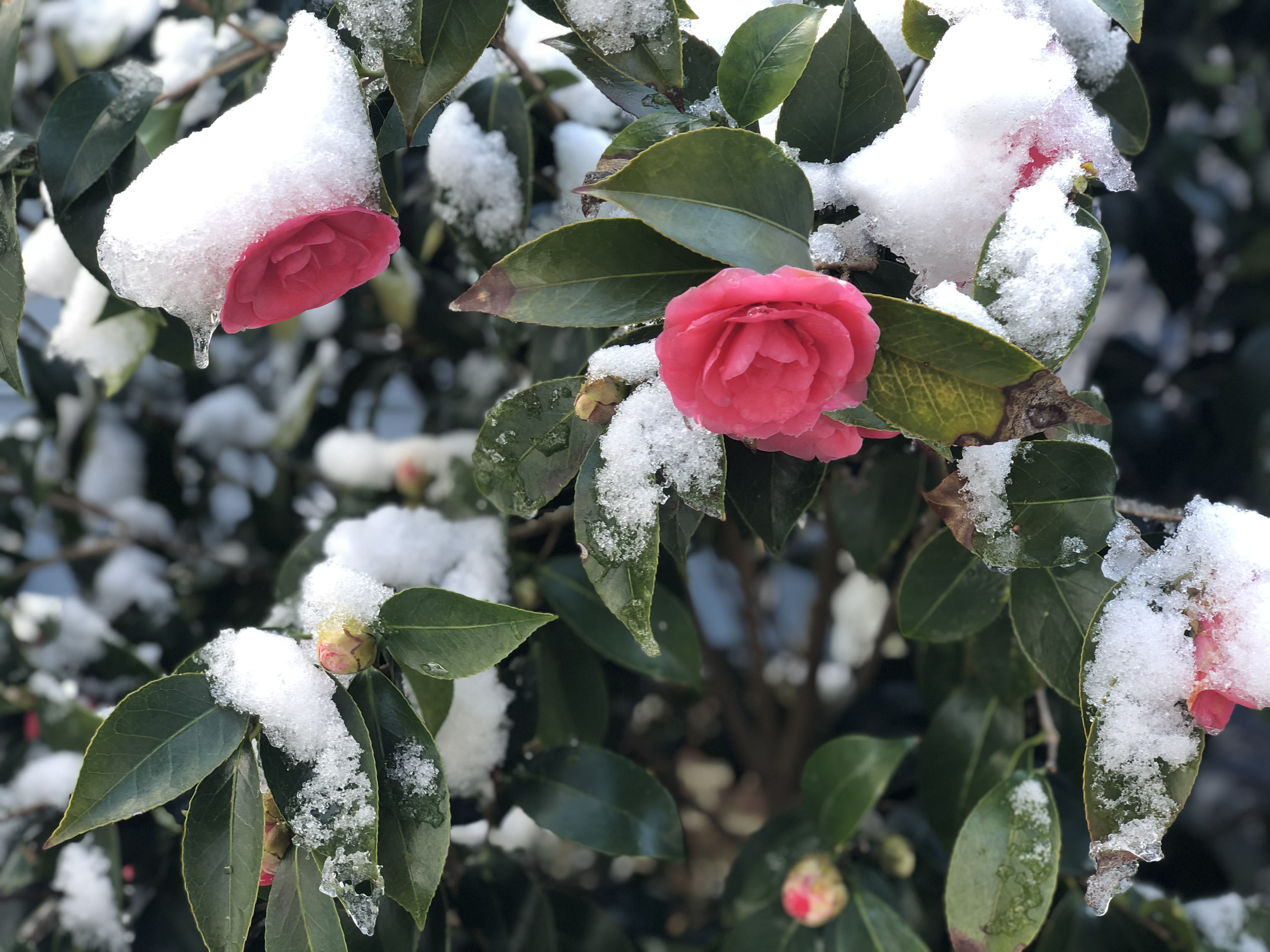
As a former propagator and grower of camellias, they are one of my favorite ornamentals. They survive winters well unless we have sustained low temperatures and cold winds. Water the root zone thoroughly before the first hard freeze to protect the roots.
Varied winter weather patterns cause a great deal of temperature fluctuations in this part of the world. Sometimes we benefit from warm air coming up from the Gulf of Mexico, but often the frigid weather of the north dips down and kisses our gardens with frost, or worse. Yes, gardening in the winter is not for the faint of heart.
I will do my best to share my tried-and-true advice on how best to manage the garden through the challenges of “winter” in the south. To simplify this BIG TOPIC, I have broken it down into three categories: extreme cold, winter precipitation, and late spring frosts.

If extreme cold weather is coming, I recommend harvesting any vegetables that you can.
Extreme Cold
Any weather extremes are bad. From drought to flooding, and hot to cold, gardeners have a lot of reasons to be wary of the forecast. But, how do you know when it is “too cold” for your plants? There are a lot of factors to consider, but 23°F is my alert temperature.
Soil moisture, plant species, and time of year all play important roles for navigating extreme cold in the winter garden. Ask yourself these questions before you do anything.
Is the ground wet or dry?
This is a very important factor. When temperatures are forecast to drop below 23°F for the first time in the season check your soil for moisture. If it has not precipitated in several weeks, consider running a sprinkler to ensure the ground is moist, and therefore, retaining more heat.
This is also an excellent time to top dress with Soil³, which will help keep your beds moist and insulated. That’s right, Soil³ and mulch will help protect root systems from freezing. Running sprinklers in advance is also a good idea if you have strong, cold winds predicted. The ice casing will help insulate and reduce cold damage.
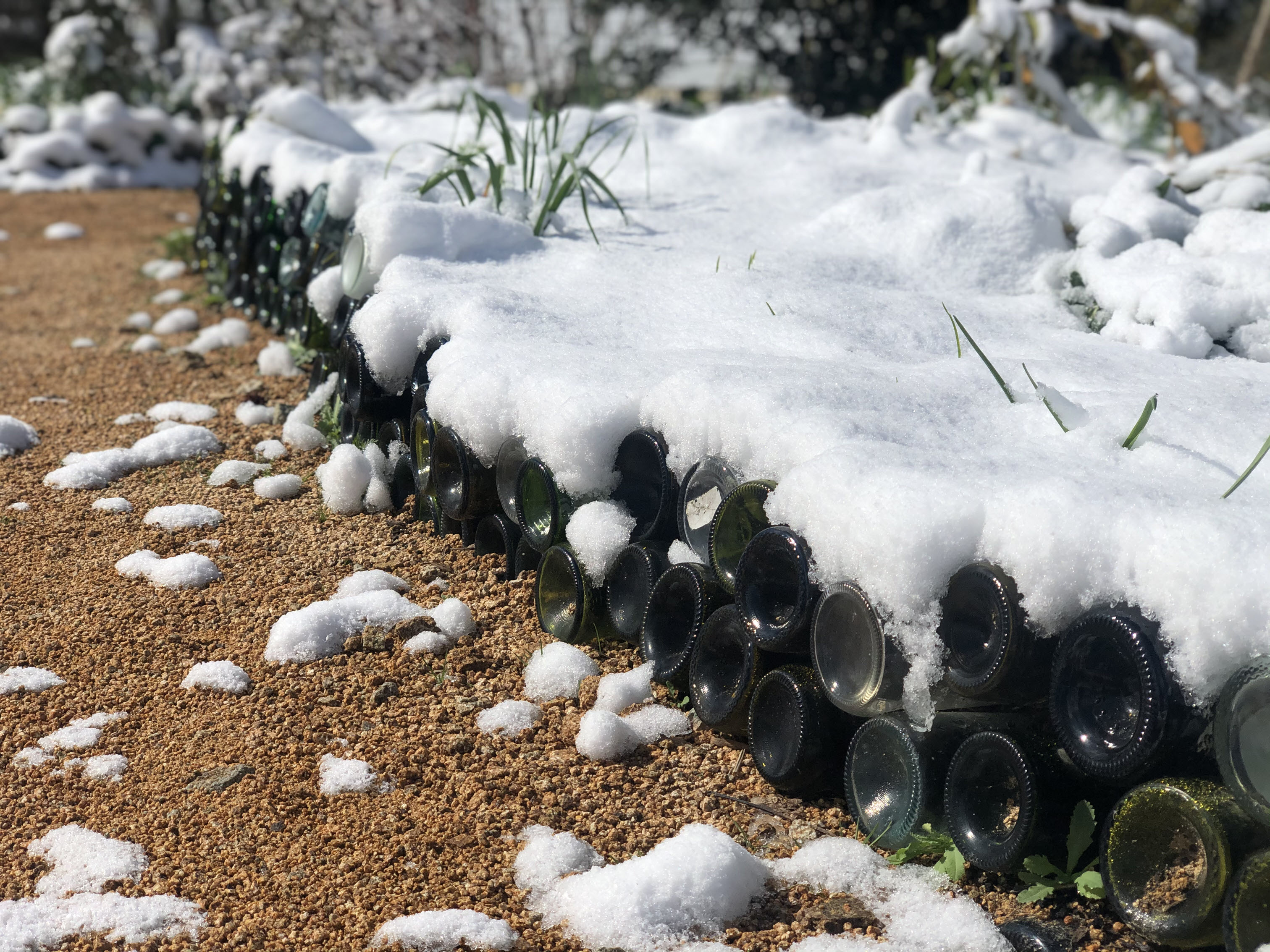
This blanket of snow insulates the plants below as well as the extra layer of Soil³ compost and mulch. My glass bottle wall along the edge of the bed actually helps transfer heat to the soil on sunny winter days.
What is the plant?
We grow a wide variety of plants including deciduous trees, evergreen shrubs, hardy perennials, seasonal flowers, and vegetables. Understanding a bit more about the plant you are trying to protect will help guide your choices about what, if anything, you need to do. Is it a super hardy deciduous plant that blooms in the middle of summer on new wood, like a hibiscus? No need to worry! However, if it is a broad leaf evergreen that sets flowers on old wood, such as a Camellia, you may need to do some covering. Understanding the difference between the many plants that make up your landscape is an important aspect of proper winter care.
- Native & Ornamental Trees, Shrubs & Perennials:
My advice is simple: Do nothing to the native and ornamental plants. If they aren’t hardy enough to live through realistic weather extremes you don’t need them. Yes, that sounds harsh, but we are living in an era of celebrating local, well-adjusted species that will survive without your interference. Extreme weather is an opportunity to learn and adapt our gardens to be more sustainable in the long run.
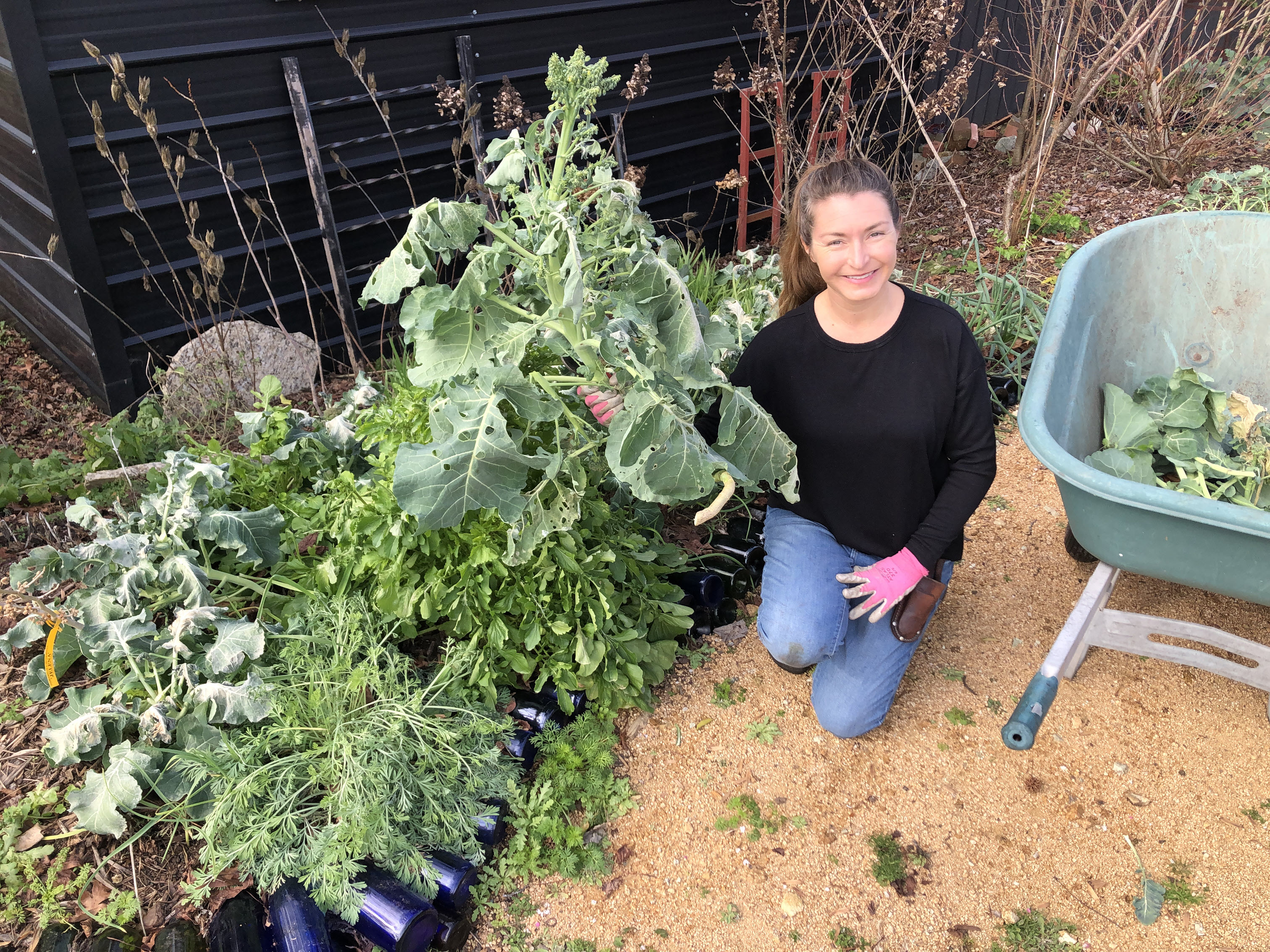
Removing damaged leaves from the broccoli after a hard frost.
- Vegetables:
Edible crops can be less forgiving to temperature extremes. I recommend harvesting what is ripe and then decide if it is worth your effort to protect what you have growing. Vegetables are easy to start from seed, so it may be logical to start over with a fresh crop that can be planted when the weather improves and be harvested in the spring.
You can cover small, acclimated plants with frost cloth, but growing in a greenhouse or cold frame will be more reliable. I don’t find that covering my winter vegetables is worth the time and effort, but that is because they are spread out over all my garden beds, a la Foodscape. If you have raised beds and hoops it is much easier to secure protective cloth or plastic and successfully “zone bend” through the cold days.
Be sure your covers are well secured in case of strong wind. Remove covers during heavy times of precipitation. Snow and ice can make the structures collapse and the covers can crush the plants underneath cause more damage than the weather.
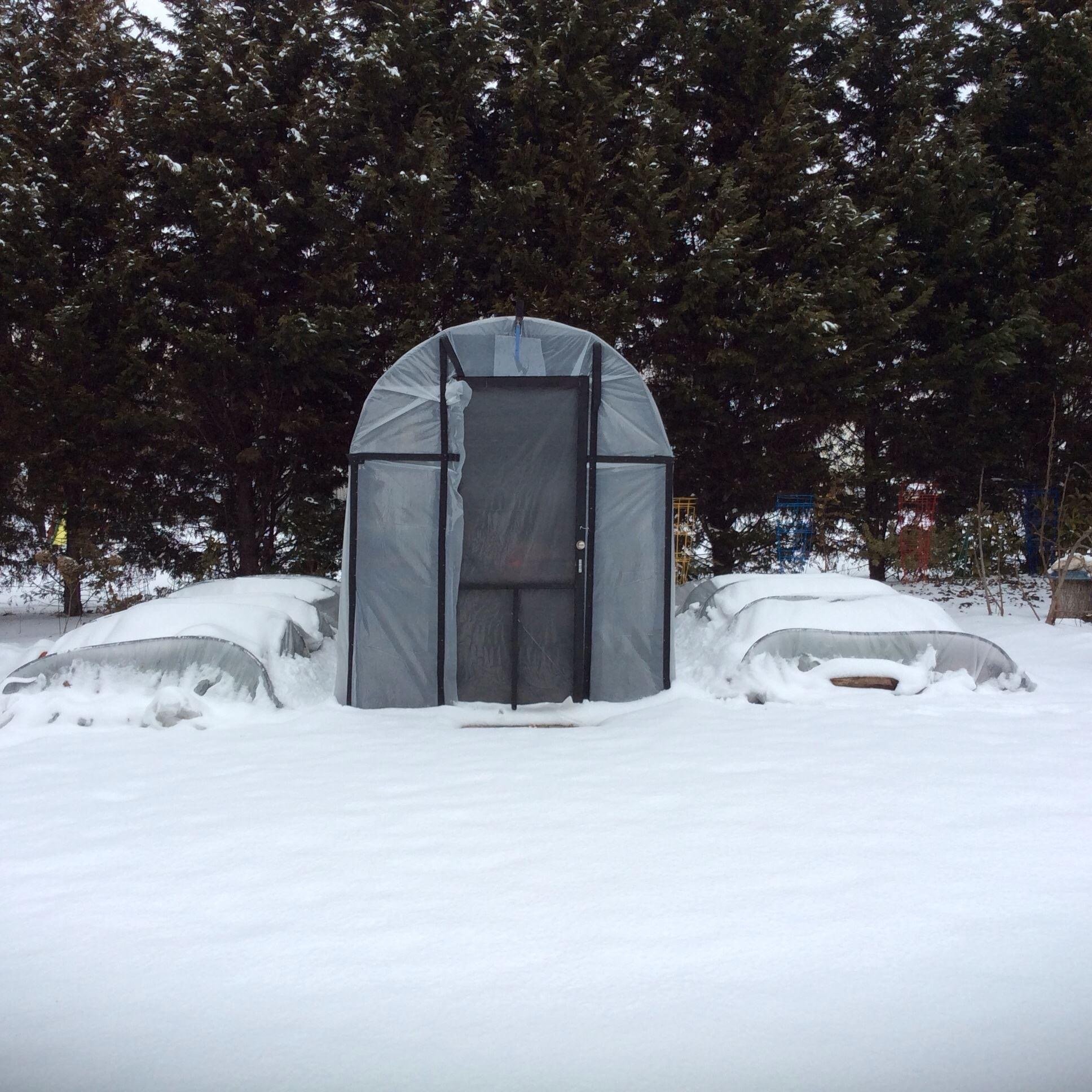
These plant covers collapsed under the weight of the snow. Instead of protecting my plants, the covers caused more damage!
What time of year is it?
If a sudden, early freeze occurs and the plants have not had the opportunity to harden off it is likely that damage will occur, even on hardy species. For example, back in 2019 we had an unusually warm frost-free fall until the middle of November when the temperature suddenly dropped to 19°F. Since the plants were not acclimated to cold, this weather event resulted in a lot of damaged plants. In this case even with protection it is likely that a hard first frost will result in damage and flower bud loss.
If cold weather strikes in mid-winter, it usually does not cause a significant amount of damage. In some cases, blooms may fall off early or tips may die back, but most of the time if the plant had the opportunity to get used to the cold all will be fine. This can be tricky in the south, because of the temperature fluctuations. Consider how warm the 2021 holiday season was. I wore a sundress and sandals for New Year’s Eve! But those weeks of warm weather tricked many plants into blooming and growing vegetatively. When the winter reality hit in early January some of those plants suffered.
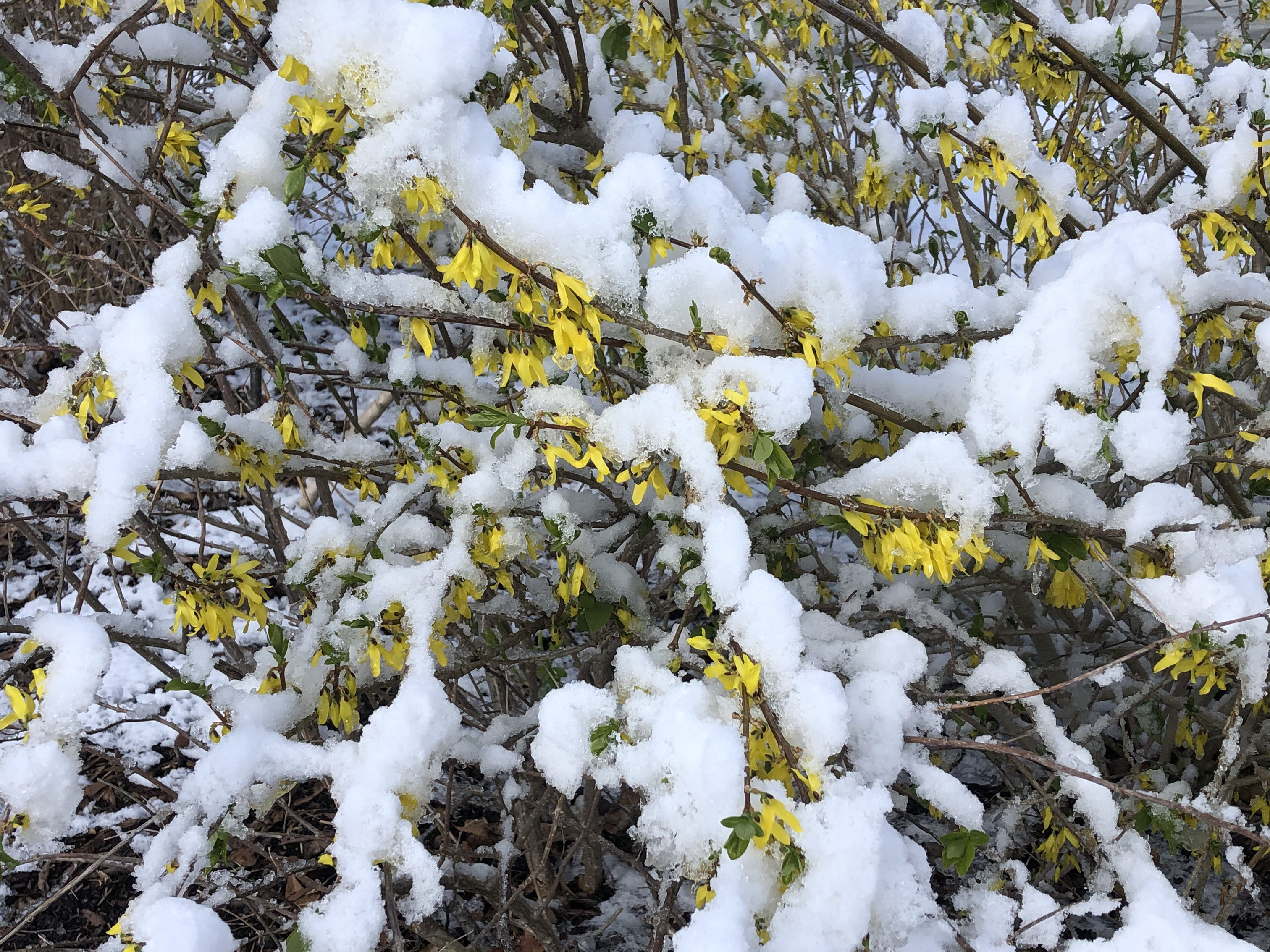
Forsythia usually blooms in mid-February here in Zone 7 and it is not unusual to have snow at that time as well.
Winter Precipitation
Winter is often a wet season in the southeast, which is good as it helps protect plants from hard freezes. Snow and ice are a benefit as they provide insulation from cold temperatures and wind. However, the accumulation of ice and snow can cause a lot of damage, as large branches can break, and trees can fall over.
DO NOT COVER PLANTS if you are predicted to get rain, ice, or snow. The cover will cause more damage than good.
Late Spring Frosts
Late frosts can be extremely damaging to tender new growth. I do go to extreme measures to save plants from a sudden cold snap in spring and it seems to happen every year. The weather warms up in February and March and we all get spring fever but I caution you from getting too far ahead of the season. Wait to plant summer crops that are extra sensitive to frost until two weeks AFTER your last frost date. This is experience talking here.
What should you do if your plants have already started to grow in the spring and then temperatures are predicted to drop below 32°F? This is when I strongly recommend covering your plants with frost cloth. Reemay garden cloth is a lightweight, cloth-like material made from polyester or polypropylene that won’t crush your plants like a quilt or sheet can. Frost cloth plant covers are reusable and are the most effective approach for protecting plants from a late spring frost.
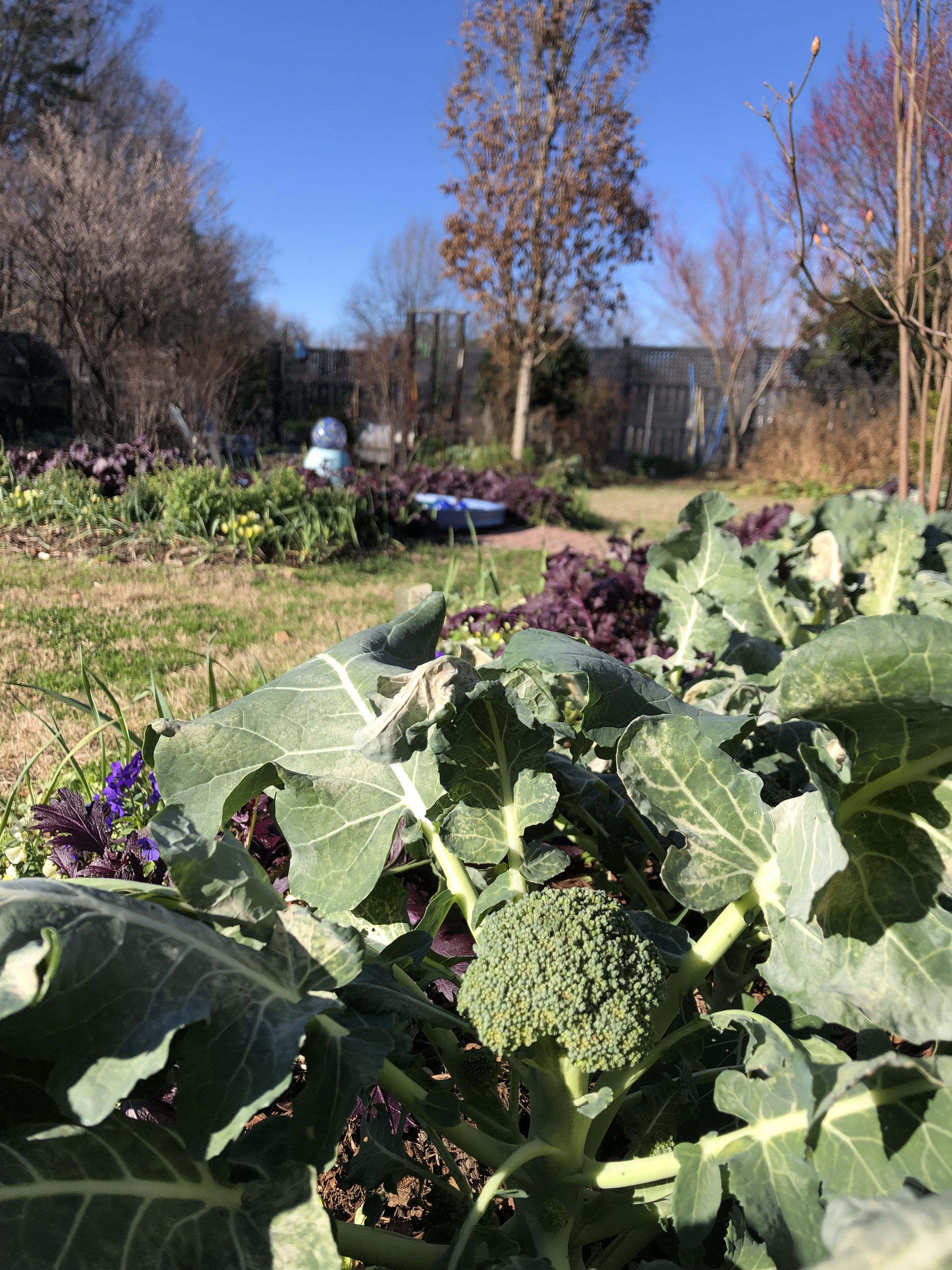
Wishing You The Best
Overall, my approach to winter gardening is to take each weather system as it comes and make decisions based on the current situation. When in doubt, don’t do anything. Plants are more resilient than we give them credit for and there is much to be learned from taking a step back and observing nature in action.
Best wishes for your winter garden,
Brie
All photos by Brie.
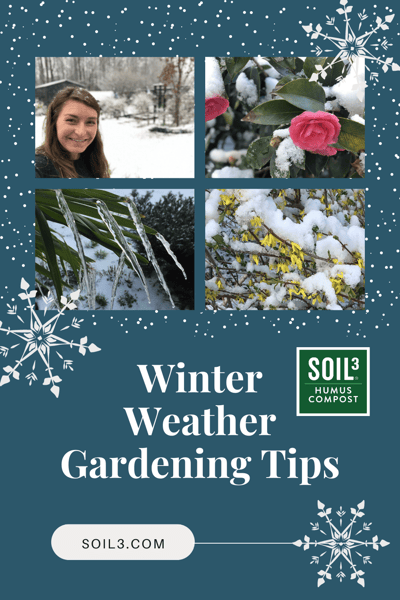
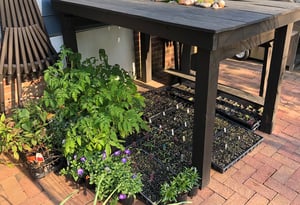


Did this help you out? Have any questions for clarity? Leave a comment below!